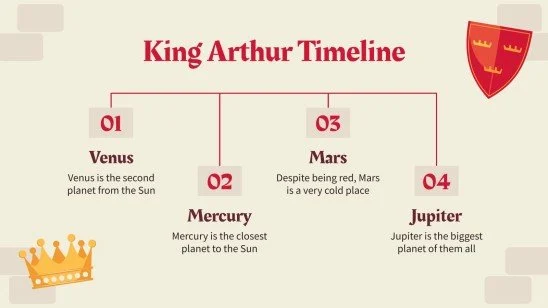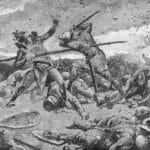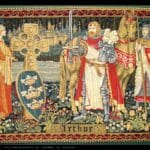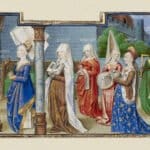Prepare to be swept away by the captivating legend of King Arthur, a tale that has captivated generations. From its origins in ancient Celtic folklore to its modern-day retellings, this timeline will guide you through the evolution of the legend. We’ll delve into the historical setting, meet the key players, witness epic battles, and explore the lasting legacy of this timeless story. Scholars have spent countless hours studying its mysteries, and we’ll uncover their theories and the ongoing debate about whether King Arthur was real or a figment of our collective imagination. So, whether you’re a seasoned fan or just curious, get ready to immerse yourself in the enduring reign of the Once and Future King.
King Arthur Timeline
The tales of King Arthur and his Knights of the Round Table have been told and retold for centuries, painting vivid pictures in our minds. While we may never know the exact dates and details of Arthur’s life, the stories create a captivating timeline of their own, filled with magic, romance, and adventure. They’ve inspired countless books, movies, and even songs – a testament to their enduring power.
From Humble Beginnings to a King
The story usually begins with Arthur’s mysterious origins. Some say he was King Uther Pendragon’s son, hidden away as a child for his own protection. It wasn’t until he effortlessly drew the magical sword, Excalibur, from a stone that his true destiny was revealed. This extraordinary feat, foretold by the wise wizard Merlin, marked him as the rightful king, destined to rule with justice and strength.
Camelot’s Golden Years
With Arthur on the throne, the kingdom of Camelot blossomed. Imagine a place buzzing with activity, overflowing with good food and laughter. Knights, renowned for their bravery and chivalry, flocked to Arthur’s side, forming the legendary fellowship of the Round Table. Together, they protected the realm, ensuring peace and prosperity reigned supreme. By Arthur’s side stood his beloved Queen Guinevere, her grace and kindness a beacon to all. And, of course, there was Merlin, the wise, providing guidance and support with his ancient magic.
A Shadow Falls
But even in this idyllic world, shadows lurked. The love between Queen Guinevere and Sir Lancelot, Arthur’s most trusted knight, was a betrayal that threatened to shatter the kingdom’s harmony. Their forbidden romance sparked a conflict, dividing the knights and weakening Camelot from within.
The Fall of a Kingdom
The fateful Battle of Camlann became a turning point in Arthur’s tale. It was a brutal, tragic clash that saw the fall of countless brave knights, including the noble Sir Lancelot. Arthur himself was mortally wounded, his dream of a united and prosperous kingdom seemingly crushed. Some whispered that he was carried away to the mystical island of Avalon, where magic could heal his wounds. Others clung to the belief that he would one day return to lead them again in their hour of need.
An Enduring Legend
While the exact timeline of King Arthur’s reign remains a mystery, his impact is undeniable. His story, passed down through generations, continues to fascinate and inspire. Themes of honor, courage, love, and the eternal battle between good and evil resonate with us, reminding us that even in the darkest of times, hope and bravery can prevail. The legend of King Arthur reminds us that even in the face of adversity, the human spirit, like Excalibur drawn from the stone, can rise to meet its destiny.
When Did King Arthur Live? Exploring the Historical Timeline
Pinning down the exact dates of King Arthur’s reign is a challenge. However, historians and literary scholars have examined the existing evidence to provide a plausible timeframe for this legendary figure.
The most common assumption places Arthur’s reign sometime between the late 5th and early 6th centuries CE (c. 460 CE to c. 560 CE). This period coincides with the decline of Roman authority in Britain and the subsequent power vacuum that ensued. Amidst this turmoil, a strong leader like Arthur, whether a king or a skilled warrior, could have risen to prominence defending the Britons against invaders.
The Battle of Badon Hill, a decisive victory attributed to Arthur, is believed to have taken place around 500 CE. This victory would have cemented Arthur’s status as a champion of the Britons and contributed to the spread of his legend.
Interestingly, the first written account of Arthur as a king, rather than just a warrior, appears in the “Historia Brittonum,” a historical text written by the Welsh cleric Nennius around 830 CE. This work significantly contributed to the popularization of Arthur’s story and solidified his image as a significant figure in British history.
The Arthurian legend continued to evolve, incorporating themes of chivalry, courtly love, and quests for magical artifacts like the Holy Grail. Authors such as Geoffrey of Monmouth (c. 1100-1155) and Sir Thomas Malory (c. 1405-1471) played a pivotal role in shaping the Arthurian legend through their renowned works, “Historia Regum Britanniae” and “Le Morte d’Arthur,” respectively. Their literary contributions transformed Arthur from a local hero to a figure of international renown.
While the historical existence of King Arthur remains a subject of debate, his enduring legacy is undeniable. He embodies courage, chivalry, and the pursuit of a just and honorable society – ideals that continue to resonate with audiences today.
To fully grasp the complexity of King Arthur’s reign, explore his conflicts with the Saxons and his enigmatic relationship with the Romans.
From Celtic Myths to Modern Legends: Tracing the Evolution of the King Arthur Timeline
The captivating tales of King Arthur, filled with knights, magic, and epic quests, did not simply emerge fully formed. Instead, they have roots stretching back to ancient Celtic myths and legends, rich in pagan beliefs and powerful symbolism. Over time, these tales were passed down orally, changing, adapting, and evolving along the way.
French poets, like Chrétien de Troyes (12th century), played a significant role in shaping the Arthurian legend. They introduced elements of courtly love, chivalry, and the quest for the Holy Grail, enriching the narrative and adding layers of complexity to Arthur’s world. German poets, too, contributed to the legend, further emphasizing themes of chivalry and romance.
In Wales, the ancient Celts preserved their own unique version of the Arthurian legend in the Mabinogion, a collection of prose tales. This collection served as a source of inspiration for later storytellers, adding to the richness and diversity of the Arthurian tradition.
As centuries passed, the Arthur legend evolved to reflect changing societal values and beliefs. It became a mirror to the world, reflecting contemporary ideas about heroism, leadership, and the search for purpose in an uncertain world.
The enduring appeal of the Arthurian legend lies in its ability to transcend time and resonate with audiences across generations. Arthur’s journey, with its triumphs and tragedies, speaks to the universal human experience, reminding us that we are all on a quest for meaning and purpose in a complex and ever-changing world.
Who’s Who in Camelot: Key Figures in the King Arthur Timeline
The world of King Arthur is populated by an unforgettable cast of characters, each playing a vital role in the unfolding drama of the Arthurian legend. Let’s meet some of the key figures:
King Arthur: At the heart of the legend stands Arthur, the embodiment of courage, justice, and wise leadership. His possession of the magical sword Excalibur marks him as the rightful king, destined to unite and protect his people.
Queen Guinevere: Arthur’s queen, Guinevere, is known for her beauty, grace, and tragic love affair with Sir Lancelot. Her story embodies the complexities of love, duty, and the consequences of forbidden passion.
Merlin: This wise and enigmatic wizard serves as Arthur’s mentor and protector, guiding him with his wisdom and magical powers. Merlin represents the enduring allure of the unknown and the transformative power of magic.
Lancelot: Considered the greatest knight in Arthur’s realm, Lancelot’s unwavering loyalty to Arthur is tested by his passionate love for Queen Guinevere. His story explores themes of chivalry, honor, and the conflict between duty and desire.
Gawain: As Arthur’s nephew and a loyal Knight of the Round Table, Gawain exemplifies chivalry, courage, and unwavering loyalty to his king and kingdom. He is often depicted as a model knight, striving for honor in all his endeavors.
The Knights of the Round Table: This fellowship of noble warriors represents the ideals of chivalry, courage, and justice. Bound by their oaths to Arthur, they embark on quests, defend the realm, and strive to uphold the values of Camelot.
Here’s a quick guide to the key players:
| Character | Role | Known For |
|---|---|---|
| King Arthur | The King of Camelot | Courage, Justice, Excalibur |
| Queen Guinevere | Arthur’s Queen | Beauty, Tragic Love |
| Merlin | Wizard, Arthur’s Advisor | Magic, Wisdom, Guidance |
| Lancelot | Knight of the Round Table | Valor, Love for Guinevere, Loyalty |
| Gawain | Knight, Arthur’s Nephew | Loyalty, Chivalry, Courage |
| Round Table Knights | Fellowship of Knights | Chivalry, Justice, Brotherhood |
These characters, with their complex relationships and compelling narratives, continue to intrigue and inspire audiences. The enduring power of the Arthurian legend lies in its ability to explore human nature in all its complexity, offering timeless lessons about love, loss, betrayal, and the enduring power of hope.













Comments are closed.